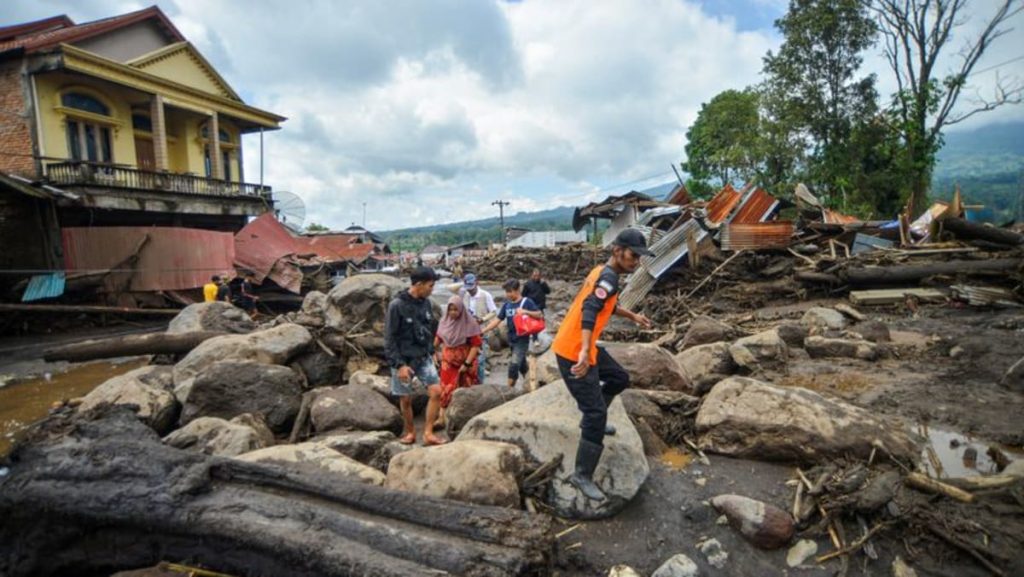Deaths caused by cold lava and flash floods on Indonesia’s Mount Marapi could have been prevented, according to experts who suggest that residents living on the slopes of the volcano should be better prepared for natural disasters. Weather modification techniques, evacuation routes, and better land use policies at the provincial level are recommended to mitigate risks exacerbated by overdevelopment and deforestation. Heavy floods, triggered by multiple eruptions over the past five months, washed tonnes of volcanic ash down the slopes of the mountain, causing surges of cold lava, water, and rocks to flow down its sides. The floods affected nearly all of the rivers with headwaters on Mount Marapi, destroying bridges, roads, farmlands, and residential areas.
By only Wednesday morning, the death toll from the flash floods reached 58 people with 35 more reported missing. The floods were so powerful that they buried entire areas under thick layers of mud and debris, creating significant damage to infrastructure and livelihoods in the region. Despite rescue efforts, the number of casualties continued to rise, with Indonesia’s disaster agency chief confirming 67 deaths and some of the missing individuals being found later in the day. The devastating impact of the floods highlights the urgent need for better disaster preparedness measures for communities living near active volcanoes like Mount Marapi.
Experts emphasize the importance of implementing evacuation plans, weather modification techniques, and improved land use policies to reduce the risks of natural disasters in the region. They point out that overdevelopment and deforestation have contributed to the vulnerability of the area to flash floods and cold lava flows from volcanic eruptions. By addressing these underlying issues and establishing effective mitigation strategies, the impact of future disasters on Mount Marapi and its surrounding communities could be minimized. The recent tragedy serves as a wake-up call for the authorities to prioritize disaster risk reduction measures and enhance resilience in the face of such catastrophic events.
As the death toll continues to rise and more individuals remain missing, the urgency of implementing proactive measures to protect communities on the slopes of Mount Marapi becomes increasingly apparent. The aftermath of the flash floods underscores the devastating consequences of natural disasters in vulnerable areas, where populations are at high risk of being affected by the destructive forces of volcanic eruptions and torrential rainfall. By adopting a multi-faceted approach that includes community preparedness, infrastructure improvements, and environmental conservation efforts, the region can build resilience and reduce the impact of future disasters on both human lives and the environment around Mount Marapi.
The tragic events on Mount Marapi serve as a stark reminder of the need for comprehensive disaster risk management strategies in regions prone to volcanic activity and extreme weather events. The loss of lives and destruction caused by the recent flash floods underscores the importance of proactive planning and investment in preventive measures to protect communities from such catastrophic events. By implementing long-term solutions that address the root causes of vulnerability, such as overdevelopment and deforestation, authorities can reduce the risks associated with living near active volcanoes like Mount Marapi and improve the resilience of local populations to natural disasters. The lessons learned from this tragedy should inform future efforts to mitigate the impact of disasters on vulnerable communities and prevent similar tragedies from occurring in the future.


